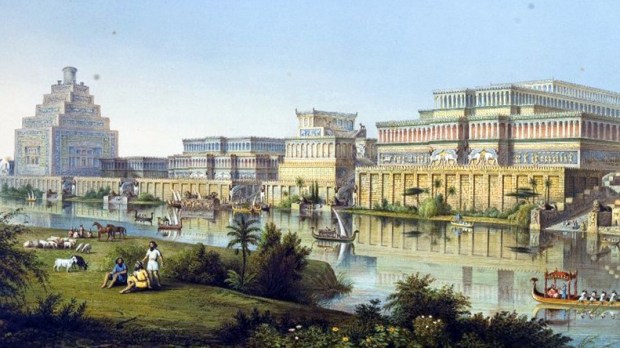Over the last few months of social distancing, virtual tours have arisen as a popular way to explore historic landmarks and cultural institutions without ever leaving one’s house. Museums have joined in the fun, offering everything from digitized exhibits to interactive 360-degree virtual recreations of their exhibits for this family-friendly educational activity.
Now, the British Museum has taken this trend a step further, by offering a “Historical City Travel Guide” for the ancient biblical city of Nineveh, first mentioned in Genesis. Written by curator Gareth Brereton, the report reads as though the city is at the height of its power and advises travelers where to go and even how to act if one were touring the historic city in the 7th century B.C.
The “ancient” travel guide holds true to its premise from the get-go, noting that, “The city of Nineveh has recently undergone extensive development to become the new capital of the mighty Assyrian empire.” Then, Brereton gives a wonderful account of the landscape, climate, and infrastructure that would make any modern city proud:
A veritable paradise on earth, the fertile lands surrounding Nineveh are perfect for growing the huge volumes of staple crops such as wheat and barley needed to feed the population of this colossal city. Benefiting from plentiful rainfall, the city is also situated where the River Khosr meets the River Tigris, which guarantees an abundant supply of water. A monumental aqueduct brings water over a vast distance to feed the city’s network of canals. Upstream from the city you will find orchards planted with vines, fruit trees and olive groves.
Leaving nothing to doubt, the guide then offers all the information that one would need if they were actually planning a vacation to Nineveh 2,600 years ago. He indicates the best time of year to take your trip, the easiest route to get there (using the historical routes that existed in the ancient world), and even what to do in the city.
Brereton highlights some of ancient Nineveh’s greatest architectural attractions, such as the “Palace Without Rival,” the Ziggurat, the Botanical Gardens, and the Temple of Ishtar, while extolling popular activities like festivals, musical performances, lion hunts, and games of sport.
The entire guide is incredibly well thought out and supported by Brereton’s extensive historical knowledge of ancient Nineveh. He even goes so far as to list the finest products to take home as souvenirs, as well as a business report that would help the discerning 7th-century B.C. businessman make investments in Nineveh, or buy land.
The report is a fun, original way to explore history that has a certain element of humor to it, while it maintains its professional style, making for an entertaining read. This seems to be the only historical travel guide that the British Museum has produced so far, but it is delightful and we hope that there are more of these unique guides on the way.
To read the British Museum’s Historical Travel Guide to Nineveh, click here.

